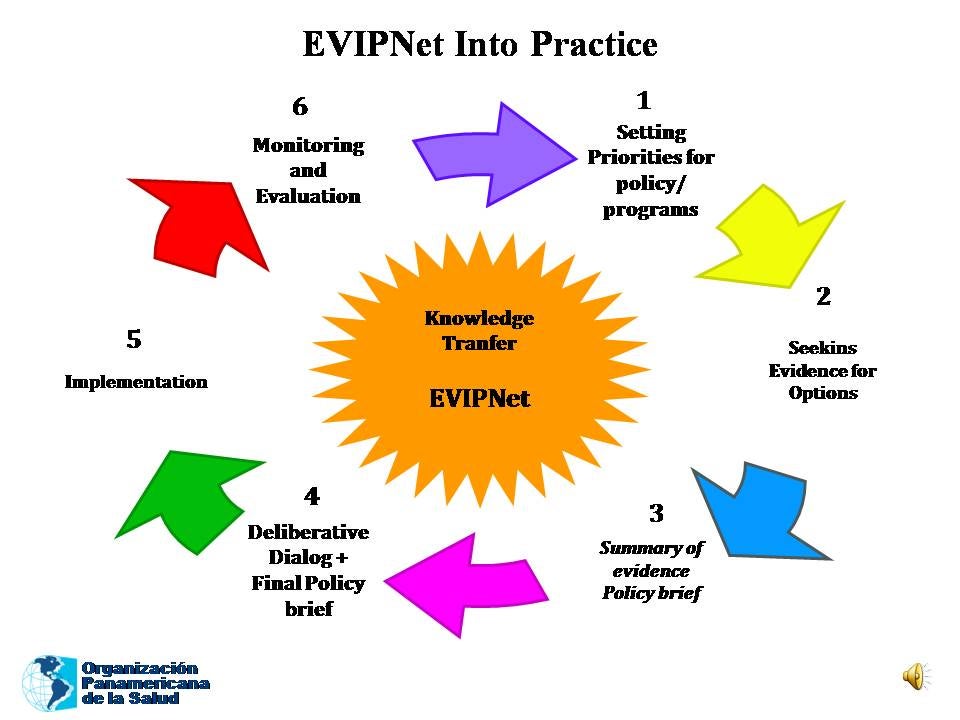

1 - Decision-makers face many challenges; they have to combine a proactive approach to priority setting (e.g. what priority should an issue be given in a national strategic plan for the health sector?) together with a reactive approach that can respond to pressing issues of the day (e.g. what priority should an issue receive when it appears on the front page of a newspaper or is discussed in the legislature?). A priority-setting approach should contribute to future plans (in the mid- and long-term), while responding to existing potentially difficult circumstances. Systematic and explicit priority-setting processes are not typically appropriate for very short timelines (i.e. hours or days) because the priority-setting process could take longer than the time in which a decision needs to be made. Explicit criteria can help to find and use research evidence (e.g. for those instances when a Minister says "We need it now!"; and they are also useful to identify which issues could be dealt with over a longer period or should be ignored altogether, and determining which issues fall somewhere in-between.
Policymakers can define problems oriented towards a disease or illness (for example,. diabetes), towards a program, service or drug (e.g. a screening program) or towards something related to the health system (for example, regulatory change in the scope of the practice of nurses). A priority-setting approach should function with multiple, often interacting orientations at the same time. Even under conditions of limited or no resources at all, it is likely that priority-setting ensures that existing resources that support evidence informed policymaking are used to achieve the best results.
2 - Evidence research should be as accurate as possible with respect to identifying those option/s characteristics that are most important to decision makers. Policymakers should also evaluate the extent to which the evidence they find are related to the questions they ask. Systematic reviews are a resource that provide insight into these processes; frame options to address a problem and describe their impact. When these systematic reviews are found, their quality should be appraised and findings examined in terms of local applicability and incorporation of considerations related to benefits, damage, costs and equity among the most important ones. It is likely that systematic reviews are not useful if a question belongs to the local evidence such as realities and constraints, citizens´ values and beliefs, power dynamics among stakeholders, institutional constraints and donors´ funding flows.
3 - Policy briefs are a relatively new approach to abridge research evidence to be used by policymakers. The first step to a policy brief is to focus on a high priority subject and describe the context relevant to the issue under discussion. A policy brief improves the interaction between researchers and policymakers. It can also help decision makers and other stakeholders to determine if, and how, research evidence available is in agreement with their own beliefs, values, interests or strategies and political objectives. Policy briefs should also outline option costs and consequences to approach the problem and the most relevant implementation considerations. It should use systematic and transparent methods to identify, select and assess research evidence to be used in the brief. Additionally, formats should be user friendly and interesting, among other things.
4 - By means of policy dialogues, the research evidence contained in the policy brief can be considered as a whole ? including the viewpoints, experiences and implicit knowledge of those who will be involved in, or affected by, future decisions related to a high priority issue. The growing interest in implementing policy dialogues has been driven by several factors, such as recognizing the need of making supported decisions, acknowledging that research evidence is just a part of the decision-making process, accepting that there are other factors that can add significant value to such processes, and recognizing that not only policymakers but also several stakeholders can take actions towards addressing high priority issues. Policy dialogues are an interactive mechanism to share knowledge and an innovative approach to support evidence-informed policymaking. Policy dialogues do not aim at reaching consensus; instead they are meant for creating a discussion ground capable of nurturing the roots for the successful implementation of a health policy. These are democratic processes.
5 - Once a decision has been made, the following key challenge is translating this policy approach into doable actions. It is necessary that local evidence (that from the specific location where decisions will be made and actions will be taken) reports most of other parties' opinions in terms of problems, options for addressing problems and implementation strategies. A recommended course of action involves analyzing potential hindrances for the successful implementation of a new policy and strategies for facilitating the necessary attitudinal changes from the citizenship, healthcare users and healthcare professionals. The quest for strategies that facilitate changes at the organization and health system levels is also recommended.
6 - Policy and decision makers as well as stakeholders will need to know, quite often, if a new policy or program has been implemented according to their expectations or plans or expected outcomes. They will often wonder if objectives are being met, if allotted funds are being adequately managed, to name a few. The term commonly used to describe the systematic data collection process to be able to answer those questions is monitoring. Sometimes, monitoring and evaluation are used interchangeably but generally the second term suggests a stronger approach as far as accomplishing an outcome. When the term "impact evaluation" is used, it typically implies that there is a specific attempt to try to determine if changes observed in the outcome can be attributed to a specific policy or program. Impact evaluations could be more informative if process evaluation is included. The process evaluation can determine if the political or programmed option was implemented as expected. It can also look into the processes of implementation and change, review the responses to the program and examine the reasons for the evaluation findings. It is important to consider that impact evaluations are worthless if findings are not used. Results should be used to inform decisions on whether to continue, change or cancel existing programs. Not being able to use evaluation findings is against one of the main objectives of carrying out said evaluations: learn from the experience and share the knowledge that has been generated.



